Quantitative Chest X-ray Radiomics for Therapy Response Monitoring in Patients with Pulmonary Tuberculosis
Abstract
:1. Introduction
2. Materials and Methods
2.1. Patient Selection
2.2. Clinical Score (TBscore)
2.3. Radiological Score (RLscore)
2.4. Radiomics Score (RadScore)
2.4.1. Image Processing
2.4.2. Primary Segmentation
2.4.3. Secondary Segmentation and Radiomic Feature Extraction
2.4.4. Creating Parameter Maps
2.4.5. Signature Features and Signature Parameter Map
2.4.6. Developing the Radiomics Score (RadScore)
2.5. Longitudinal Change
3. Results
3.1. Parameter Maps
3.2. Developing a RadScore
3.3. Change in RLscore, TBscore and RadScore
4. Discussion
5. Conclusions
Author Contributions
Funding
Institutional Review Board Statement
Informed Consent Statement
Data Availability Statement
Conflicts of Interest
References
- WHO. Global Tuberculosis Report 2021; World Health Organization: Geneva, Switzerland, 2021. [Google Scholar]
- Melendez, J.; van Ginneken, B.; Maduskar, P.; Philipsen, R.H.H.M.; Ayles, H.; Sánchez, C.I. On Combining Multiple-Instance Learning and Active Learning for Computer-Aided Detection of Tuberculosis. IEEE Trans. Med. Imaging 2016, 35, 1013–1024. [Google Scholar] [CrossRef] [PubMed]
- Santosh, K.C.; Antani, S. Automated Chest X-ray Screening: Can Lung Region Symmetry Help Detect Pulmonary Abnormalities? IEEE Trans. Med. Imaging 2018, 37, 1168–1177. [Google Scholar] [CrossRef] [PubMed]
- Chassagnon, G.; Vakalopoulou, M.; Paragios, N.; Revel, M.P. Artificial intelligence applications for thoracic imaging. Eur. J. Radiol. 2020, 123, 108774. [Google Scholar] [CrossRef] [PubMed]
- Stephen, S.F.Y.; Hugo, J.W.L.A. Applications and limitations of radiomics. Phys. Med. Biol. 2016, 61, R150–R166. [Google Scholar] [CrossRef]
- Brady, A.; Laoide, R.Ó.; McCarthy, P.; McDermott, R. Discrepancy and error in radiology: Concepts, causes and consequences. Ulst. Med. J. 2012, 81, 3–9. [Google Scholar]
- Nachiappan, A.C.; Rahbar, K.; Shi, X.; Guy, E.S.; Mortani Barbosa, E.J.; Shroff, G.S.; Ocazionez, D.; Schlesinger, A.E.; Katz, S.I.; Hammer, M.M. Pulmonary Tuberculosis: Role of Radiology in Diagnosis and Management. RadioGraphics 2017, 37, 52–72. [Google Scholar] [CrossRef]
- Che-Engku-Chik, C.E.N.; Yusof, N.A.; Abdullah, J.; Othman, S.S.; Mat Said, M.H.; Wasoh, H. Detection of tuberculosis (TB) using gold standard method, direct sputum smears microscopy, PCR, qPCR and electrochemical DNA sensor: A mini review. J. Biochem. Microbiol. Biotechnol. 2016, 4, 16–21. [Google Scholar] [CrossRef]
- Willis, B.H.; Coomar, D.; Baragilly, M. Clinical scores in primary care. Br. J. Gen. Pract. 2020, 70, 279. [Google Scholar] [CrossRef]
- Jensen, S.B.; Rudolf, F.; Wejse, C. Utility of a clinical scoring system in prioritizing TB investigations—A systematic review. Expert Rev. Anti-Infect. Ther. 2019, 17, 475–488. [Google Scholar] [CrossRef]
- Wejse, C.; Gustafson, P.; Nielsen, J.; Gomes, V.F.; Aaby, P.; Andersen, P.L.; Sodemann, M. TBscore: Signs and symptoms from tuberculosis patients in a low-resource setting have predictive value and may be used to assess clinical course. Scand. J. Infect. Dis. 2008, 40, 111–120. [Google Scholar] [CrossRef]
- Aunsborg, J.W.; Hønge, B.L.; Jespersen, S.; Rudolf, F.; Medina, C.; Correira, F.G.; Johansen, I.S.; Wejse, C.; for the Bissau HIV Cohort Study Group. A clinical score has utility in tuberculosis case-finding among patients with HIV: A feasibility study from Bissau. Int. J. Infect. Dis. IJID Off. Publ. Int. Soc. Infect. Dis. 2020, 92S, S78–S84. [Google Scholar] [CrossRef] [PubMed]
- Setiawati, R.; Widyoningroem, A.; Handarini, T.; Hayati, F.; Basja, A.T.; Putri, A.R.D.S.; Jaya, M.G.; Andriani, J.; Tanadi, M.R.; Kamal, I.H. Modified Chest X-ray Scoring System in Evaluating Severity of COVID-19 Patient in Dr. Soetomo General Hospital Surabaya, Indonesia. Int. J. Gen. Med. 2021, 9, 2407–2412. [Google Scholar] [CrossRef] [PubMed]
- Nishant, A.; Samruddhi Dhanaji, C.; Prashant, J.; Shivakumar, I.; John, D. Brixia Chest X-ray Scoring System in Critically Ill Patients with COVID-19 Pneumonia for Determining Outcomes. J. Clin. Diagn. Res. 2021, 15, OC15–OC17. [Google Scholar] [CrossRef]
- Sofic, A.; Cizmic, M.; Beslagic, E.; Becirevic, M.; Mujakovic, A.; Husic-Selimovic, A.; Granov, L.A. Brixia Chest X-ray Severity Scoring System is in Relation with C-reactive Protein and D-dimer Values in Patients with COVID-19. Diagnostics 2023, 13, 2122. [Google Scholar] [CrossRef]
- Borghesi, A.; Zigliani, A.; Golemi, S.; Carapella, N.; Maculotti, P.; Farina, D.; Maroldi, R. Chest X-ray severity index as a predictor of in-hospital mortality in coronavirus disease 2019: A study of 302 patients from Italy. Int. J. Infect. Dis. 2020, 96, 291–293. [Google Scholar] [CrossRef]
- Borghesi, A.; Maroldi, R. COVID-19 outbreak in Italy: Experimental chest X-ray scoring system for quantifying and monitoring disease progression. La Radiol. Medica 2020, 125, 509–513. [Google Scholar] [CrossRef] [PubMed]
- Jaeger, S.; Juarez-Espinosa, O.H.; Candemir, S.; Poostchi, M.; Yang, F.; Kim, L.; Ding, M.; Folio, L.R.; Antani, S.; Gabrielian, A.; et al. Detecting drug-resistant tuberculosis in chest radiographs. Int. J. Comput. Assist. Radiol. Surg. 2018, 13, 1915–1925. [Google Scholar] [CrossRef]
- Shen, R.; Cheng, I.; Basu, A. A Hybrid Knowledge-Guided Detection Technique for Screening of Infectious Pulmonary Tuberculosis from Chest Radiographs. IEEE Trans. Biomed. Eng. 2010, 57, 2646–2656. [Google Scholar] [CrossRef]
- Melendez, J.; van Ginneken, B.; Maduskar, P.; Philipsen, R.H.; Reither, K.; Breuninger, M.; Adetifa, I.M.O.; Maane, R.; Ayles, H.; Sánchez, C.I. A Novel Multiple-Instance Learning-Based Approach to Computer-Aided Detection of Tuberculosis on Chest X-rays. IEEE Trans. Med. Imaging 2015, 34, 179–192. [Google Scholar] [CrossRef]
- Du Plessis, T.; Rae, W.I.D.; Sathekge, M.M. Pulmonary tuberculosis diagnosis, differentiation and disease management: A review of radiomics applications. Pol. J. Med. Phys. Eng. 2021, 27, 251–259. [Google Scholar] [CrossRef]
- Zheng, B.-H.; Liu, L.-Z.; Zhang, Z.-Z.; Shi, J.-Y.; Dong, L.-Q.; Tian, L.-Y.; Ding, Z.-B.; Ji, Y.; Rao, S.-X.; Zhou, J.; et al. Radiomics score: A potential prognostic imaging feature for postoperative survival of solitary HCC patients. BMC Cancer 2018, 18, 1148. [Google Scholar] [CrossRef]
- Du Plessis, T.; Ramkilawon, G.; Rae, W.I.D.; Botha, T.; Martinson, N.A.; Dixon, S.A.P.; Kyme, A.; Sathekge, M.M. Introducing a secondary segmentation to construct a radiomics model for pulmonary tuberculosis cavities. La Radiol. Medica 2023, 128. [Google Scholar] [CrossRef]
- Dixon, S.A.P. Using Deep Learning to Segment Chest X-rays for the Analysis of Pneumonia. Master’s Thesis, School of Biomedical Engineering, University of Sydney, Sydney, Australia, 2019. [Google Scholar]
- Scapicchio, C.; Gabelloni, M.; Barucci, A.; Cioni, D.; Saba, L.; Neri, E. A deep look into radiomics. La Radiol. Medica 2021, 126, 1296–1311. [Google Scholar] [CrossRef] [PubMed]
- van Timmeren, J.E.; Cester, D.; Tanadini-Lang, S.; Alkadhi, H.; Baessler, B. Radiomics in medical imaging—“How-to” guide and critical reflection. Insights Imaging 2020, 11, 91. [Google Scholar] [CrossRef] [PubMed]
- Jason, W.O.; Amy, O. The power of outliers (and why researchers should ALWAYS check for them). Pract. Assess. Res. Eval. 2004, 9, 6. [Google Scholar]
- Urvoy, M.; Autrusseau, F. Application of Grubbs’ test for outliers to the detection of watermarks. In Proceedings of the 2nd ACM Workshop on Information Hiding and Multimedia Security, Salzburg, Austria, 11–13 June 2014; pp. 49–60. [Google Scholar]
- van’t Hoog, A.H.; Meme, H.K.; Van Deutekom, H.; Mithika, A.M.; Olunga, C.; Onyino, F.; Borgdorff, M.W. High sensitivity of chest radiograph reading by clinical officers in a tuberculosis prevalence survey. Int. J. Tuberc. Lung Dis. 2011, 15, 1308–1314. [Google Scholar] [CrossRef] [PubMed]
- Harisinghani, M.G.; McLoud, T.C.; Shepard, J.-A.O.; Ko, J.P.; Shroff, M.M.; Mueller, P.R. Tuberculosis from Head to Toe. RadioGraphics 2000, 20, 449–470. [Google Scholar] [CrossRef] [PubMed]
- Zhou, Z.; Zhou, L.; Shen, K. Dilated conditional GAN for bone suppression in chest radiographs with enforced semantic features. Med. Phys. 2020, 47, 6207–6215. [Google Scholar] [CrossRef]



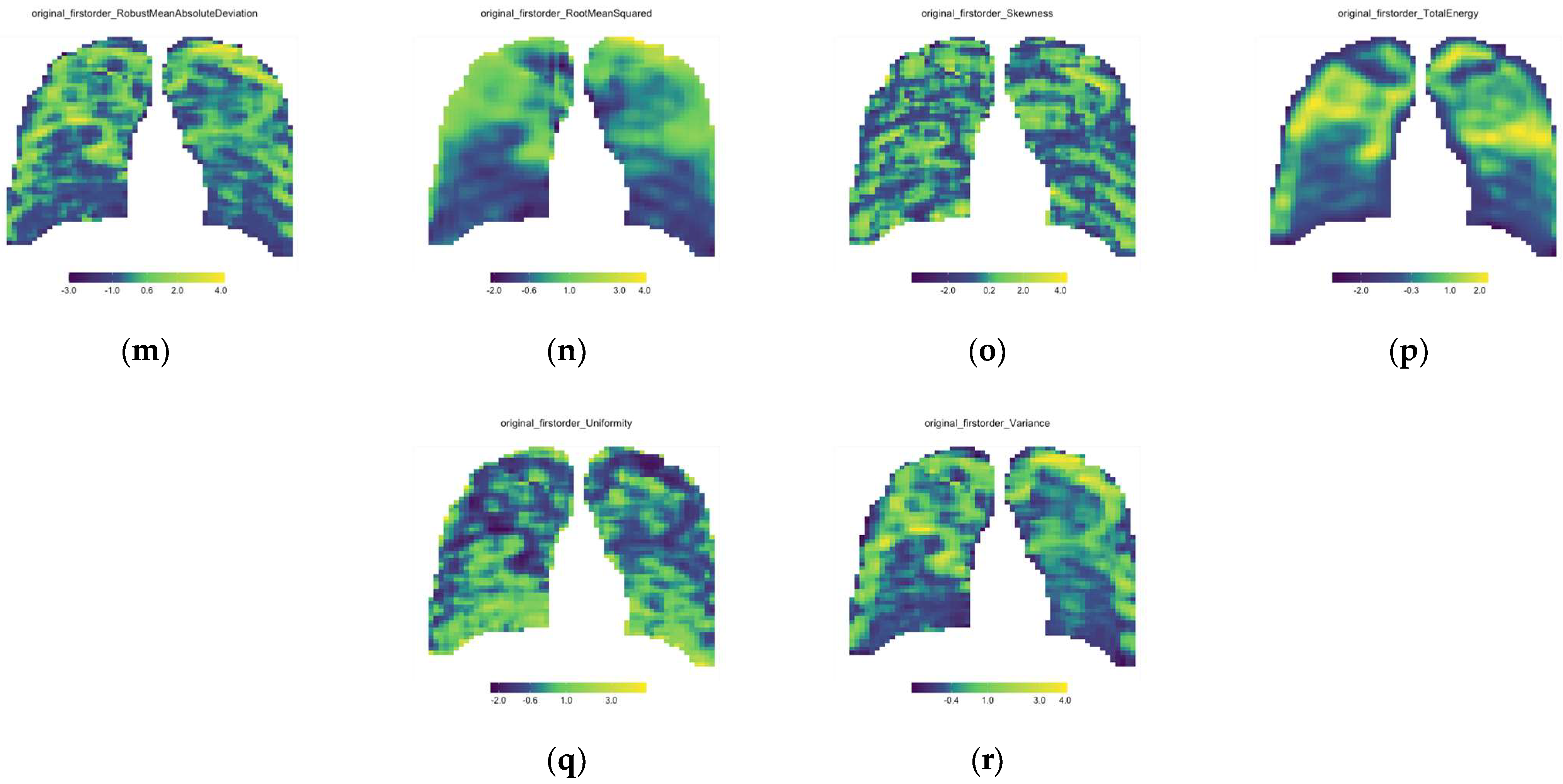
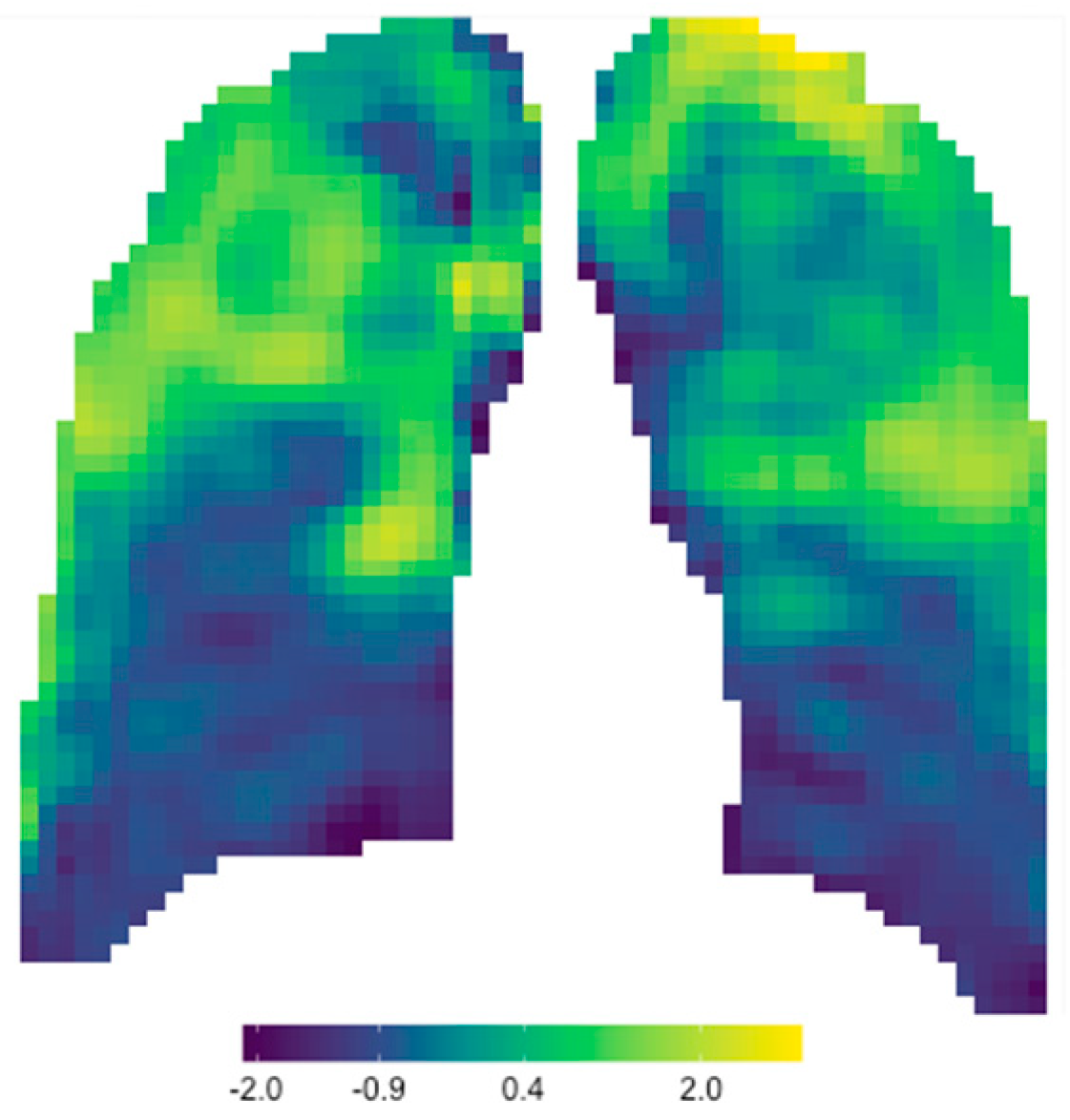



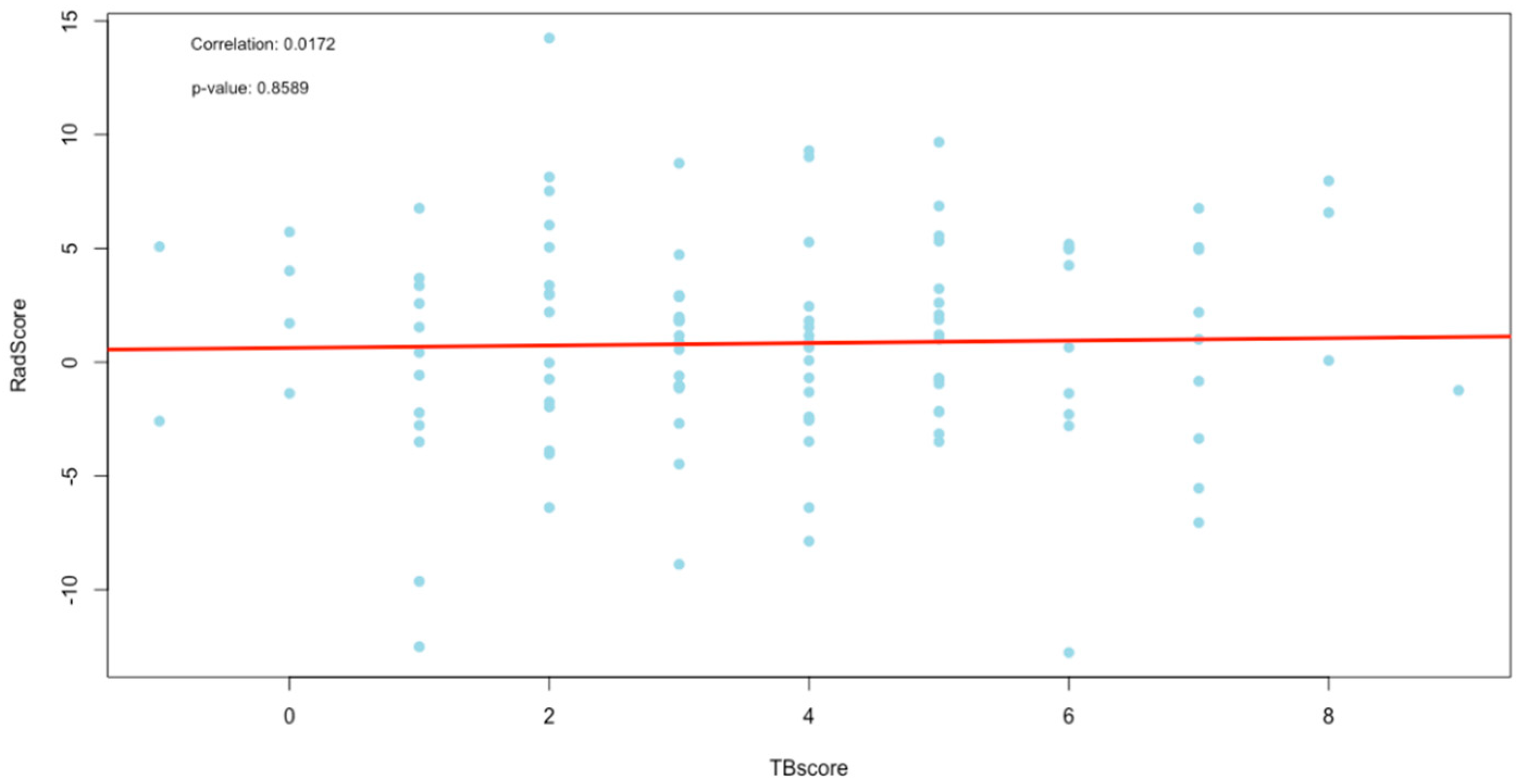
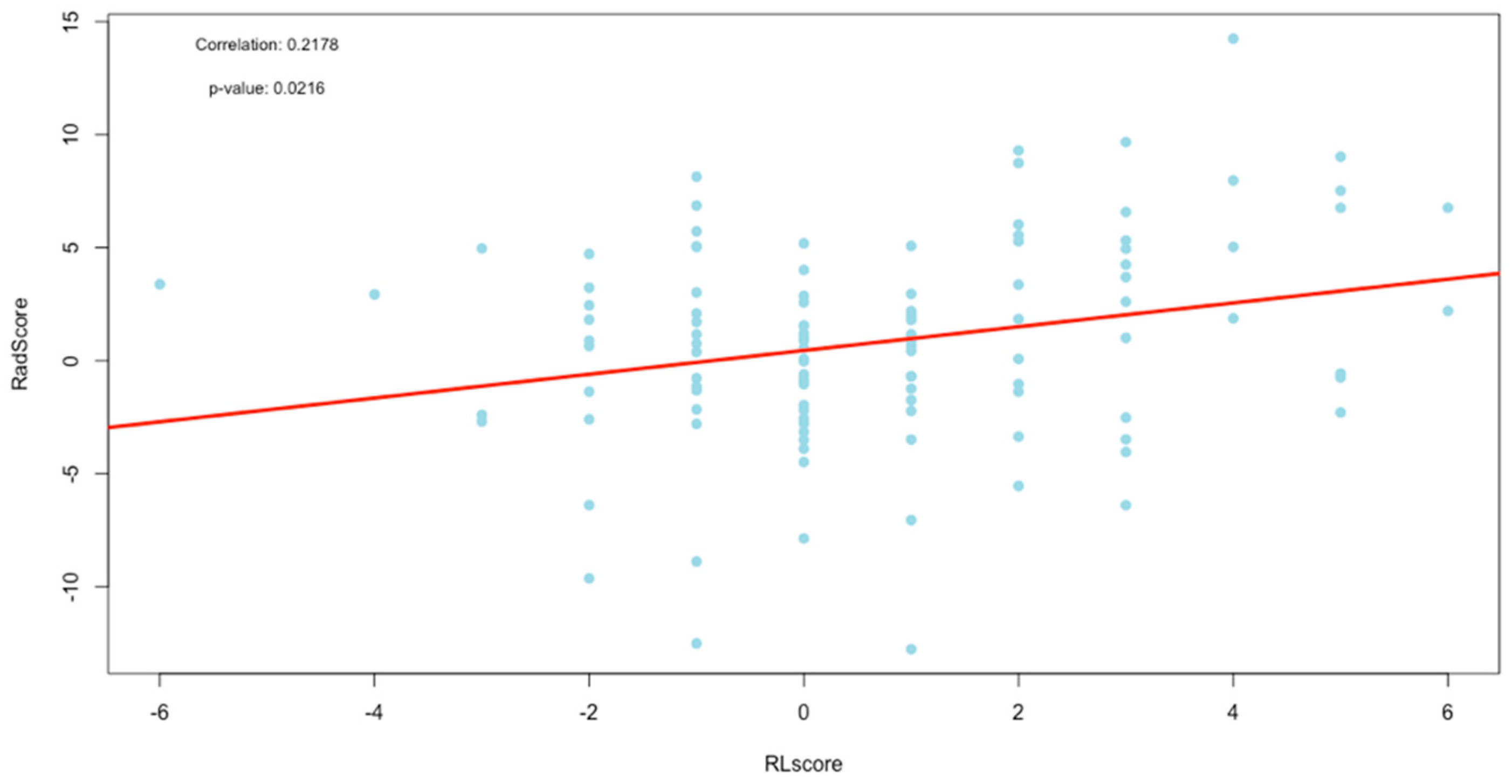
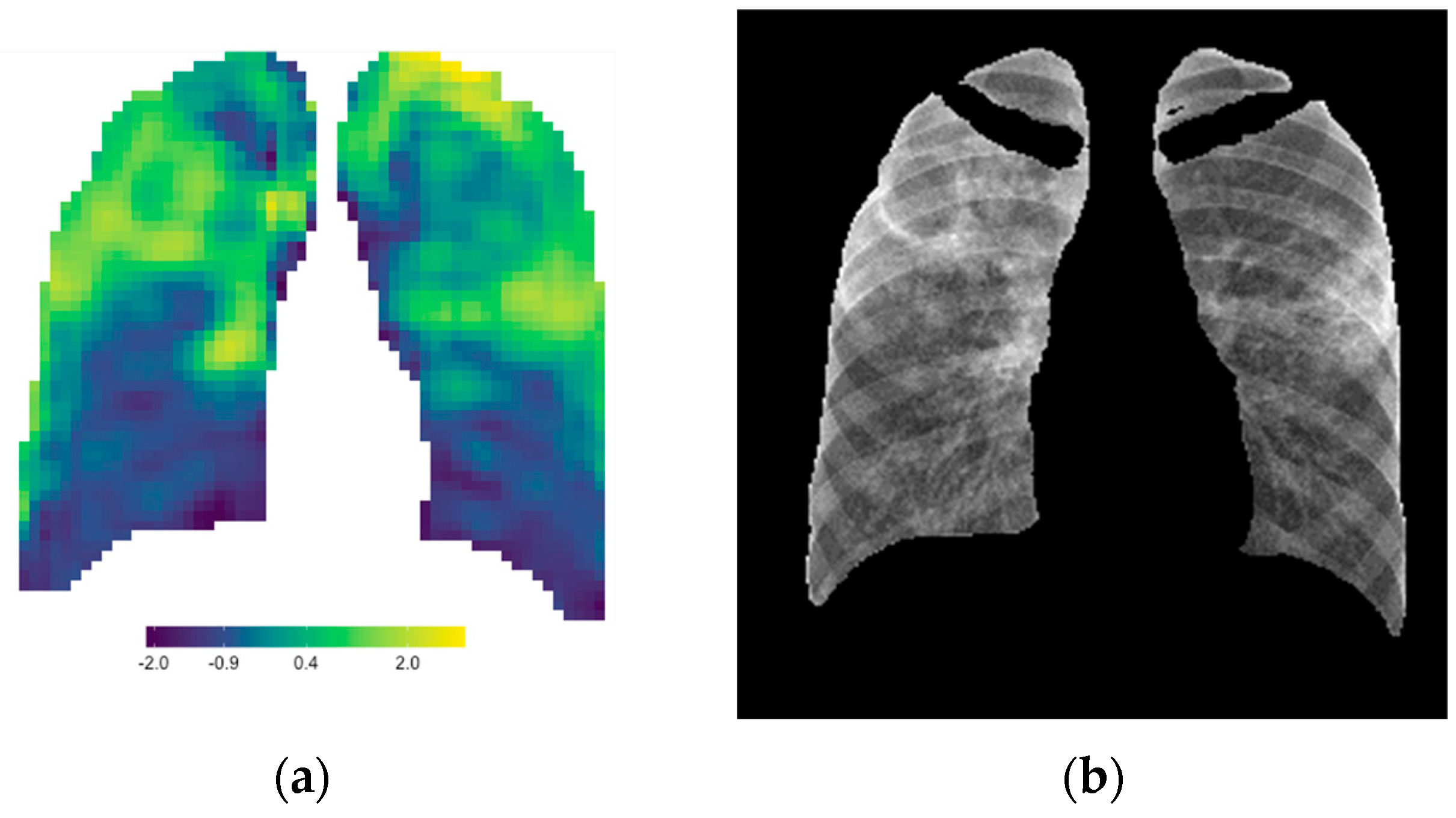
| Sign or Symptom | Criteria | ||
|---|---|---|---|
| Score | 0 | 1 | 2 |
| How do you feel? | 7–10 (Good) | 4–6 (Okay) | ≤3 (Awful) |
| Fever (°C) | ≤37.5 (NO) | >37.5 deg (YES) | |
| Pulse rate (bmp) | <90 | 90–100 | >100 |
| Cough (days) | No cough | <60 or No cough at prior visit | ≥60 or No cough at prior visit |
| BMI (kg/m2) | >20 | 18–20 | <18 |
| Nights sweats (days) | 0 | <60 days | ≥60 days |
| X-ray Classification: Cavitation | X-ray Classification: Extent of Disease | ||
|---|---|---|---|
| 1 | Absent, as seen on a posteroanterior (PA) or anteroposterior (AP) CXR view. | A (1) | Limited: Lesion(s) involving a total lung area less than one-quarter of the area for the entire thoracic cavity, as seen in the PA or AP view. |
| 2 | Single or multiple cavities with diameter < 4 cm in aggregate (for each cavity, measure at point of maximum diameter) for a PA or AP CXR view. | B (2) | Moderate: Lesion(s) greater than A, but which, even if bilateral, involve a total lung area of less than one-half the area of the entire thoracic cavity, as seen in the PA or AP view. |
| 3 | Single or multiple cavities with diameter ≥ 4 cm in aggregate (each cavity was measured at the point of maximum diameter) for a PA or AP CXR view. | C (3) | Extensive: Lesion(s) involving a total lung area equal to, or more than half the area, of the entire thoracic cavity, as seen in the PA or AP view. |
| Feature Number | Feature Name |
|---|---|
| 1 | First order—90th percentiles |
| 2 | First order—Median |
| 3 | First order—Mean |
| 4 | First order—Energy |
| 5 | First order—Root mean square |
| 6 | First order—Total Energy |
| Scores Being Compared | Correlation Value | p-Value |
|---|---|---|
| TBscore vs. RLscore | 0.0884 | 0.3607 |
| TBscore vs. RadScore (prop. 3 to 6) | 0.0172 | 0.8589 |
| RLscore vs. RadScore (prop. 3 to 6) | 0.2178 | 0.0216 |
Disclaimer/Publisher’s Note: The statements, opinions and data contained in all publications are solely those of the individual author(s) and contributor(s) and not of MDPI and/or the editor(s). MDPI and/or the editor(s) disclaim responsibility for any injury to people or property resulting from any ideas, methods, instructions or products referred to in the content. |
© 2023 by the authors. Licensee MDPI, Basel, Switzerland. This article is an open access article distributed under the terms and conditions of the Creative Commons Attribution (CC BY) license (https://creativecommons.org/licenses/by/4.0/).
Share and Cite
Du Plessis, T.; Rae, W.I.D.; Ramkilawon, G.; Martinson, N.A.; Sathekge, M.M. Quantitative Chest X-ray Radiomics for Therapy Response Monitoring in Patients with Pulmonary Tuberculosis. Diagnostics 2023, 13, 2842. https://doi.org/10.3390/diagnostics13172842
Du Plessis T, Rae WID, Ramkilawon G, Martinson NA, Sathekge MM. Quantitative Chest X-ray Radiomics for Therapy Response Monitoring in Patients with Pulmonary Tuberculosis. Diagnostics. 2023; 13(17):2842. https://doi.org/10.3390/diagnostics13172842
Chicago/Turabian StyleDu Plessis, Tamarisk, William Ian Duncombe Rae, Gopika Ramkilawon, Neil Alexander Martinson, and Mike Michael Sathekge. 2023. "Quantitative Chest X-ray Radiomics for Therapy Response Monitoring in Patients with Pulmonary Tuberculosis" Diagnostics 13, no. 17: 2842. https://doi.org/10.3390/diagnostics13172842
APA StyleDu Plessis, T., Rae, W. I. D., Ramkilawon, G., Martinson, N. A., & Sathekge, M. M. (2023). Quantitative Chest X-ray Radiomics for Therapy Response Monitoring in Patients with Pulmonary Tuberculosis. Diagnostics, 13(17), 2842. https://doi.org/10.3390/diagnostics13172842







